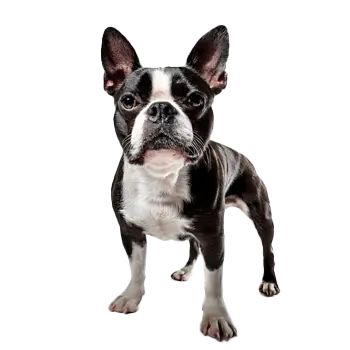Boston Terriers typically enjoy a lifespan of eleven to thirteen years, with many individuals reaching or exceeding this range when provided with proper care, nutrition, and regular veterinary attention. As a brachycephalic breed with a shortened muzzle and flat face, they face specific health considerations that potential owners must understand and prepare to manage. Responsible breeding practices and health screening have improved breed health over recent decades, but certain conditions remain more prevalent in Boston Terriers than in some other breeds.
Brachycephalic obstructive airway syndrome represents the most significant health concern in Boston Terriers, affecting their ability to breathe efficiently due to their shortened facial structure. This condition encompasses several anatomical abnormalities including stenotic nares (narrowed nostrils), elongated soft palate, and sometimes everted laryngeal saccules or hypoplastic trachea. Symptoms include noisy breathing, snoring, difficulty exercising, and heat intolerance. Severe cases may require surgical intervention to improve airway function. Owners must vigilantly monitor for signs of respiratory distress, particularly during exercise or in hot weather.
Eye problems occur with increased frequency in Boston Terriers due to their prominent, large eyes. Cataracts can develop in young adults or senior dogs, potentially requiring surgical removal to restore vision. Corneal ulcers may result from the eyes' exposure and protrusion, caused by trauma, foreign objects, or inadequate tear production. Cherry eye, prolapse of the third eyelid gland, sometimes affects young dogs and often requires surgical correction. Glaucoma, characterized by increased intraocular pressure, can lead to blindness if untreated. Regular ophthalmologic examinations help identify these conditions early when treatment proves most effective.
Patellar luxation affects some Boston Terriers, particularly smaller individuals. This orthopedic condition involves the kneecap slipping out of its normal position, causing lameness, pain, and potential arthritis development. Mild cases may require only weight management and exercise modification, while severe luxation necessitates surgical correction. Hip dysplasia, though less common in Boston Terriers than in larger breeds, occasionally occurs. This hereditary condition involves abnormal hip joint development leading to arthritis and mobility issues. Reputable breeders screen breeding stock for these orthopedic problems.
Deafness presents another concern, particularly in dogs with extensive white markings. Both congenital and age-related hearing loss can affect the breed. Responsible breeders test puppies using BAER (Brainstem Auditory Evoked Response) testing to identify deaf individuals before placement. While deaf dogs can live full, happy lives with appropriate training modifications, potential owners should be aware of this possibility.
Allergies affect many Boston Terriers, manifesting as skin irritation, itching, ear infections, or gastrointestinal upset. Environmental allergens, food sensitivities, or contact allergies may trigger symptoms. Management typically involves identifying and avoiding allergen triggers, using appropriate medications, and maintaining good skin care. Some dogs require lifelong allergy management through diet modifications, medications, or immunotherapy.
Preventive care plays a vital role in maintaining Boston Terrier health throughout their lives. Regular veterinary examinations, ideally twice yearly for adults and more frequently for seniors, allow early detection of developing problems. Keeping vaccinations current protects against infectious diseases. Heartworm prevention medication administered monthly safeguards against this potentially fatal parasite. Flea and tick prevention products protect against external parasites and the diseases they transmit. Maintaining appropriate body weight through proper nutrition and exercise prevents obesity-related health complications. Dental care, including professional cleanings and home tooth brushing, prevents periodontal disease that can affect overall health. Establishing relationships with veterinarians experienced in brachycephalic breeds ensures appropriate care tailored to Boston Terrier-specific needs.
Common Health Issues
- Eye problems occur with increased frequency in Boston Terriers due to their prominent, large eyes.
- Glaucoma, characterized by increased intraocular pressure, can lead to blindness if untreated.
- Patellar luxation affects some Boston Terriers, particularly smaller individuals.
- Hip dysplasia, though less common in Boston Terriers than in larger breeds, occasionally occurs.
- Allergies affect many Boston Terriers, manifesting as skin irritation, itching, ear infections, or gastrointestinal upset.
- Environmental allergens, food sensitivities, or contact allergies may trigger symptoms.
Preventive Care & Health Monitoring
- Boston Terriers typically enjoy a lifespan of eleven to thirteen years, with many individuals reaching or exceeding this range when provided with proper care, nutrition, and regular veterinary attention.
- Responsible breeding practices and health screening have improved breed health over recent decades, but certain conditions remain more prevalent in Boston Terriers than in some other breeds.
- Owners must vigilantly monitor for signs of respiratory distress, particularly during exercise or in hot weather.
- Mild cases may require only weight management and exercise modification, while severe luxation necessitates surgical correction.
Regular veterinary check-ups and preventive care are essential for maintaining your American Gentlemen's health and longevity.

